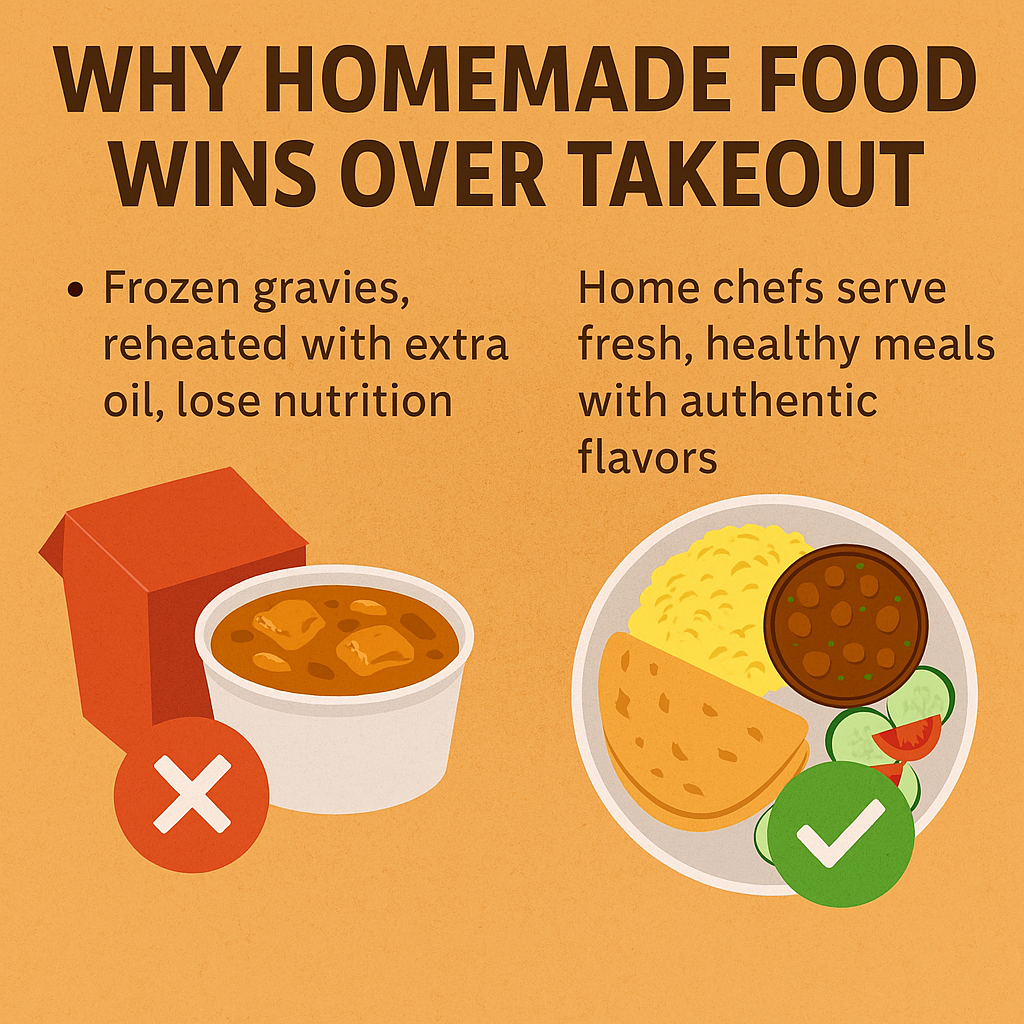
It was a rainy Thursday evening in Mumbai. Ayaan sat on his couch, stomach grumbling, eyes fixed on the delivery app on his phone. He scrolled endlessly—burgers, biryani, butter chicken—everything seemed tempting, yet oddly soulless.
His mother had just flown back home after staying with him for two months. During her visit, he hadn’t needed a single app to feed himself. The warmth of her dal, the crispiness of her parathas, the aroma of tadka in her sabzi—it had all felt effortless. But now, with work deadlines looming and no time to cook, takeout had returned like an old habit.
That night, Ayaan ordered his usual from a popular restaurant. The butter paneer arrived looking glossy, almost too perfect. But the first bite told a different story. It was oily, overly spicy, and tasted oddly generic. He could tell the gravy wasn’t fresh—it had that faint sour undertone of something frozen, something old.
And he wasn’t wrong.
What’s Really in Your Takeout?
Most people don’t realize this, but restaurant food is rarely made fresh from scratch every single time. Gravies, especially, are often prepared in bulk and frozen for weeks—sometimes even 2 to 3 months. Before it reaches your plate, it’s reheated, extra oil is added to revive its texture, and additional masalas are thrown in to mask the staleness.
That glossy shine you admire? That’s not freshness—it’s oil and heat tricking your senses.
What you end up eating is a meal stripped of its nutrients, overloaded with fats and salt, and designed only to taste good—not to nourish.
The Taste of Home Is Different
Contrast this with the way a home chef prepares food. Take Meena aunty from Pune, for instance. She wakes up at 5:30 AM, kneads fresh dough, picks vegetables from the local market, and starts preparing meals not for hundreds, but for just 10–15 people a day. Her customers aren’t just order numbers—they’re names and faces she knows.
She uses high-quality oils, seasonal vegetables, and her own handmade spice blends. Nothing sits in a freezer. Nothing is microwaved to life. The result? Food that not only tastes authentic but feels like a warm hug to your digestive system.
When you bite into her methi thepla or her light yet flavorful kadhi, you’re not just eating—you’re being cared for.
The Secret Ingredients: Intention and Integrity
The difference lies not just in ingredients but in intention.
Restaurants are designed for scale and speed. They cater to 100+ people a day, juggling 30+ dishes on a menu. Authenticity often takes a backseat to efficiency.
But home chefs cook like they’re feeding their own family. There’s a sacredness to their process—a care that can’t be automated or outsourced. And it reflects in every bite.
This is why so many people are turning to home food delivery near me and discovering the magic of real, wholesome food again.
Health Isn’t a Luxury—It’s a Choice
We live in an age where everything is one click away—groceries, medicine, even relationships. Online food ordering is easy, addictive, and dangerously convenient. But it comes at a cost: bloating, fatigue, indigestion, and long-term health issues that no one sees coming.
When food is just about convenience, we lose the connection between what we eat and how we feel.
Choosing home-cooked food is a reclamation of that connection. It’s saying no to preservatives, no to unnecessary oil, and yes to balance, nourishment, and love.
A New Way to Order Food—With Heart
Platforms like PinkAprons are making it easier than ever to choose food made with heart. Unlike restaurants, our focus isn’t on mass production. We partner with verified home chefs in Pune and Mumbai who cook fresh, daily meals tailored to your taste and health needs.
So the next time you’re scrolling through places to order healthy food online, think beyond the usual suspects. Think about who’s cooking your meal, and how it’s being made.
Ayaan did. He signed up for a weekly plan from a local home chef via PinkAprons. That weekend, when his mom called to ask what he had for lunch, he smiled and said,
“It tasted just like yours.”
🌱 Real food is more than flavor—it’s memory, it’s care, it’s home.
Choose fresh. Choose local. Choose homemade.